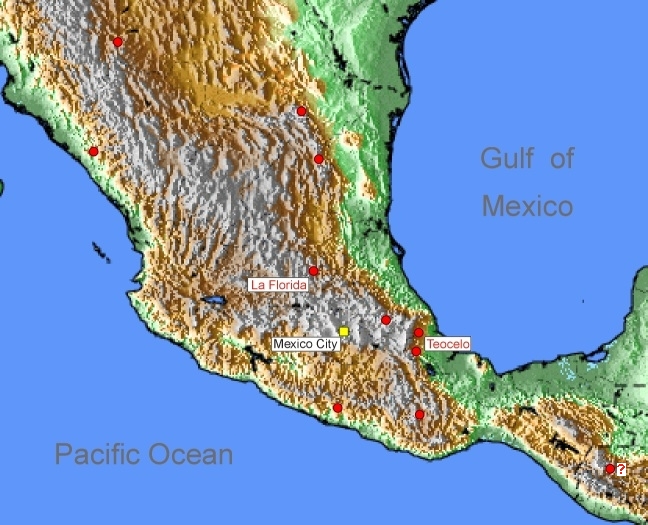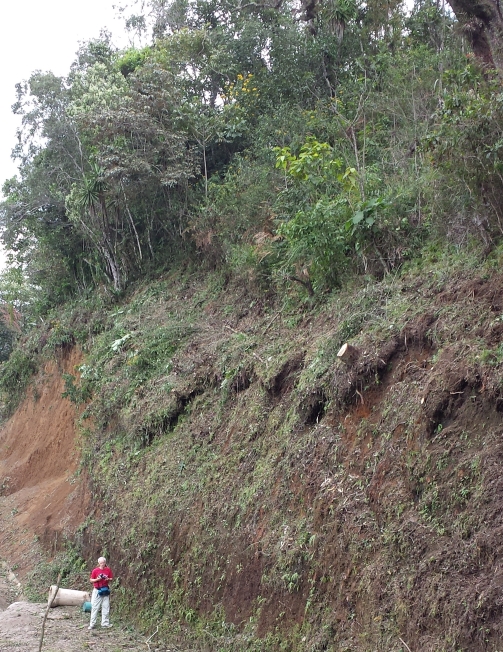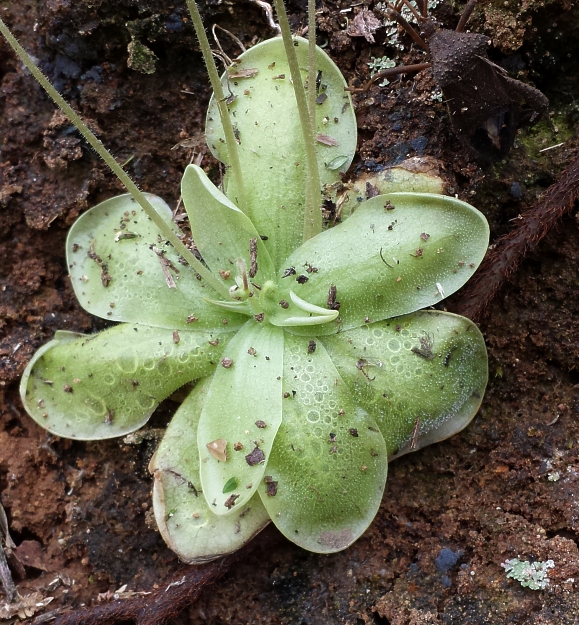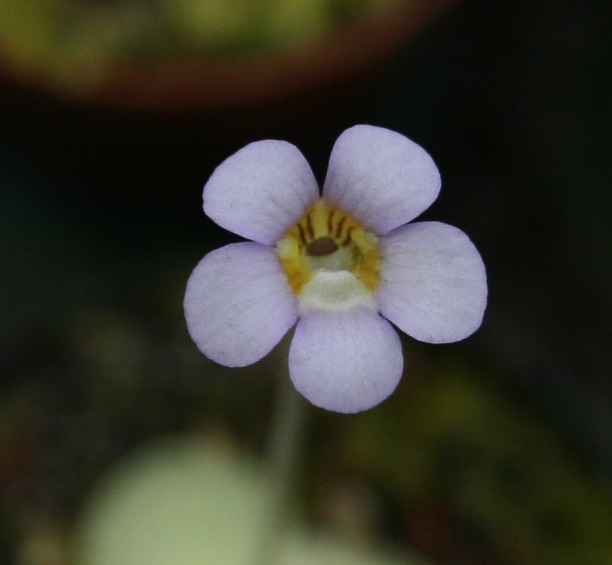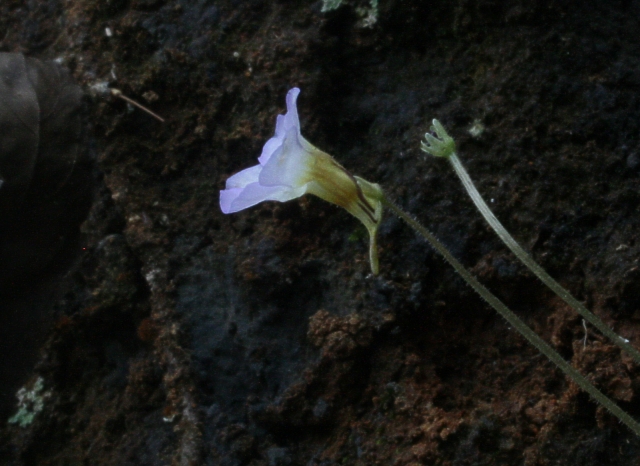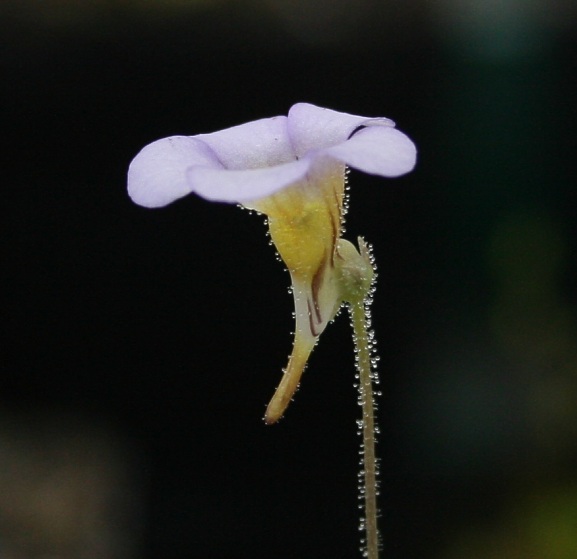
Oliver Gluch's World of Carnivorous Plants or: "What you always wanted to know about butterworts" |
| Impressum |

| Home | Origin | Prey | Species | Plant Purchase | Other Carnivorous Plants | Info about Carnivorous Plants | About me |
Pinguicula lilacina Schlechtendal & Chamisso (1830)From
plant
material, that was collected during a botanical travel
by the German naturalist Ferdinand Deppe in 1824 in
Mexico and brought back to Germany, the two German
botanists Diederich Franz Leonhard von Schlechtendal and
Adelbert von Chamisso described in 1830 a new butterwort
species. Due to the (almost) violet coloration of the
corolla lobes they named it Pinguicula lilacina.
The distribution of this species is very likely restricted only to Mexico, where populations are found in the Sierra Madre Oriental, in the Sierra Madre Occidental as well as in the Sierra Madre del Sur. Specimens of P. lilacina found East of the Isthmus of Mexico are doubtful and are probably the closely related species P. sharpii. Plants do occur mainly on slopes growing in mosses or directly in a loamy sandy soil in oak and pine forests. The species seems to be capable to adapt to a wider range of climatic conditions, as populations can be found in warmer, more drier subtropical climate as well as in more cooler and more moist mountain cloud forests. Until now populations of P. lilacina were found in altitudes between 700 and 2400 m above sea level. P.
lilacina belongs to the tropical-homophyllous
growth type. Therefore the plants do only form one leaf
type. Under unfavourable climatic conditions (e.g. frost
or drought) plants are dying and the next
generation from seed does only start
germinating when the conditions or more humid or
warmer again. At locations without a longer period of
dry conditions, the species can grow probably all year
round. Under those conditions adult plants die after
having abundantly produced flowers and new plants occur
from seed. At those locations all ages of plants can be
found growing side by side.
The leaf rosette consists of 5 to 10 carnivorous leaves.
Depending on age of the plants and on climatic
conditions the size of the leaves can vary. Under
favourable conditions the leaves can reach size of 4,5
cm in length. The form of the lamina is obovate to
elongated-obovate, while the petiole is cuneiform. The
surface of the leaves are densely covered with glands to
catch prey. The leaves are very thin,
therefore condensed water drops based on the lower
side of the leaves are shining through.
According to publications the flowering period of P. lilacina seems to vary. From own habitat observations s that flowering is occuring as long as the conditions are favourable and plants will die due to dry conditions or frost. In some habitats plants may flower all year round. Plants can produce up to 9 flower stalks. The light green coloured flower stalks can get 5 to 15 cm long and are densely covered with gland bearing hair. The size of the flower is relatively small. The corolla consists of 5 corolla lobes. The lobes are 4 to 6 mm long and 2 to 4mm broad. The lobes of the upper lip are slightly smaller compared to the lower lobes. The form of the lobes can vary from rounded to elongated-obovate. The colours of the corolla lobes that can occur are violet, pale violet, pale purple and almost white. A typical character of this species is the white hump-like palate on the middle lobe of the lower lip. In addition the palate is covered with small white hair. The cylindircal corolla tube gets 3 to 5 mm long. In the inside of the tube there are 3 rows of white hair starting at the end of the palate. The outside of the tube shows a yellowish colour, turning more into white towards the spur. In addition the tube is covered with brown-violet veins. The green to yellow-brown coloured spur gets 2 to 4 mm long and forms an obtuse angle with the corolla tube. Cultivation
of
P. lilacina has shown best success when grown
under higher humidity. The cultivation of an individual
plant for more than 12 months seems to be possible, but
adult plants tend to die spontaneously after having
formed a large number of flowers. For this reason plants
have to be propagated permanently by seed to secure a
continuous cultivation. Using pure vermiculite as
substrate has shown good cultivation results. It doesn't
seem that the species is a self-pollinator. In
cultivation only few seed pods have been developing
without active pollination. Therefore it is recommended
to pollinate the flowers, for example with a small
brush, to obtain constantly enough seed.
|
